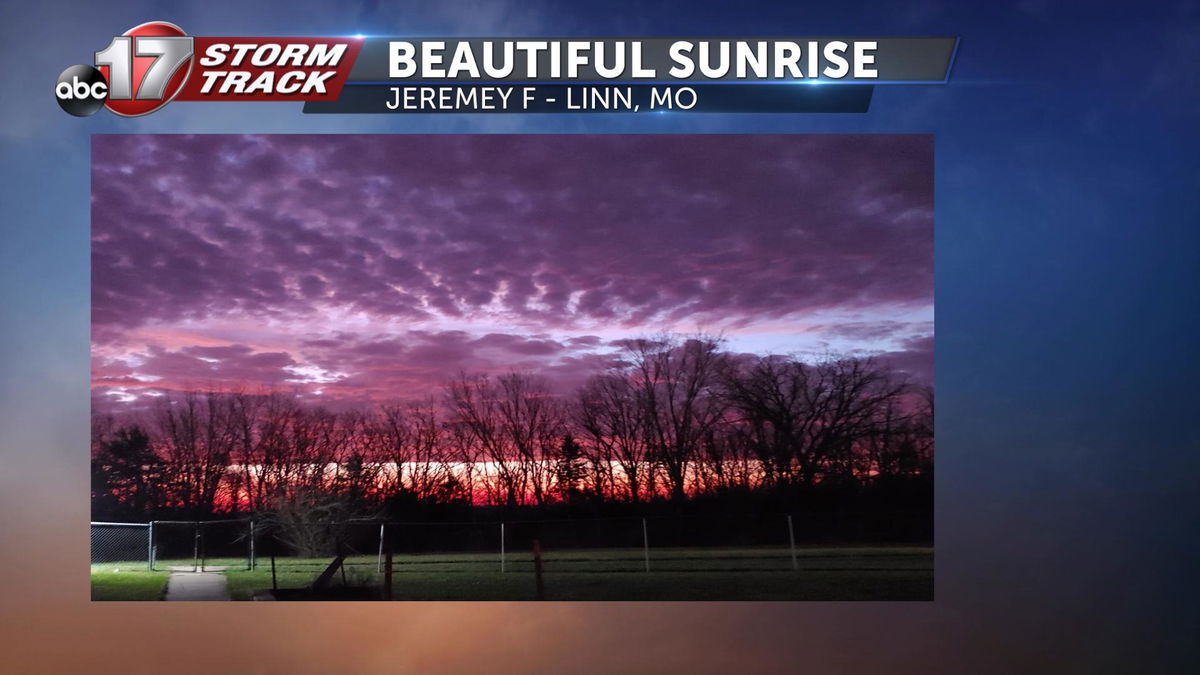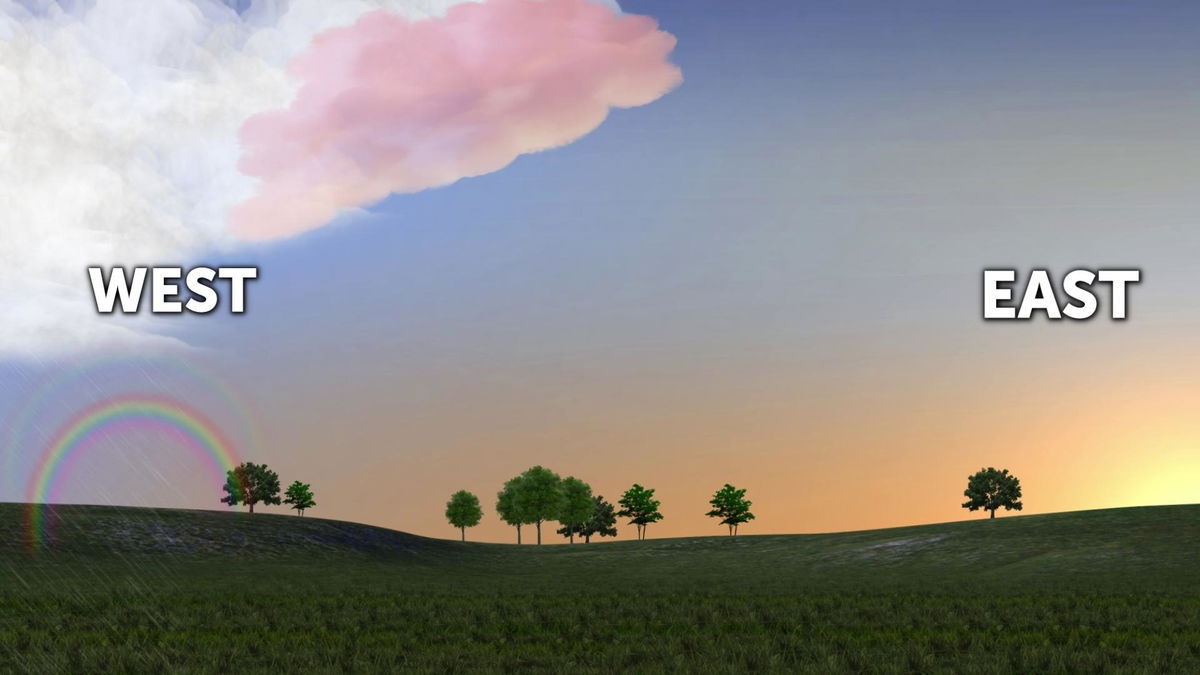BEAUTIFUL SUNRISE: The science behind the color and the rare morning rainbow
Chances are if you were out around 7:00am this morning, you were greeted by a beautiful, color-filled sky. Red, orange, purple, blue... It was a cornucopia of colors!
Now, if you were in the right spot in mid-Missouri, you got a double dose! Many in Boone County saw a large double rainbow as this morning's rainfall approached.


It's probably one of the better sunrises you'll ever get the chance to see and when you break down how it happened, you find out that the timing was impeccable! But first...
Why are sunrises and sunsets able to produce such vibrant colors?
It all has to do with the science behind how light works. To us... colors are... colors. But when you break down what their "physical" component is... it's actually just a bunch of photons waving back and forth at different speeds.
For darker colors like violets and purple, the speed at which they wave back and forth happens faster than a color like orange or red. This difference in the speed at which these waves move is known as "wavelength". Colors with faster wavelengths move faster, but can't usually "go" as far. Colors with longer wavelengths tend to be more drawn out, and can be seen better over a longer distance.

Now, this "science of color" is important in terms of sunrises and sunsets why they tend to have more vibrancy.
Take this diagram below for instance. You'll notice that as the earth spins, the distance light has to travel from the top of Earth's atmosphere to the surface is longest at sunrise and sunset.
This morning's setup
Remember colors like red and orange have longer wavelengths... well, in the same facet, the long that light travels, the more likely you're to have colors like red and orange to show up. That's why you usually only see deep reds or orange's right along the horizon.
Things become really nice when those colors have something to reflect off of, like terrain or clouds.

This morning, the forward advance of higher clouds (which typically precede rainfall) came in a the PERFECT time to reflect the colors of this morning's sunrise.
Along with that, the advancing rain shaft that quickly followed popped in just in time for some of that light to be reflected in the form of a rainbow (which is a scattering of light due to each rain drop).
Basically, we needed the first round of clouds to come through, mostly unobstructed (at the exact right time) and we needed the rain shaft to be exposed as well--a nd typically rain showers light enough to produce a rainbow are more common in the afternoon hours...
It really was a symphony of timing, science and a little bit of luck that brought a beautiful sight to mid-Missouri this morning.
-Luke
